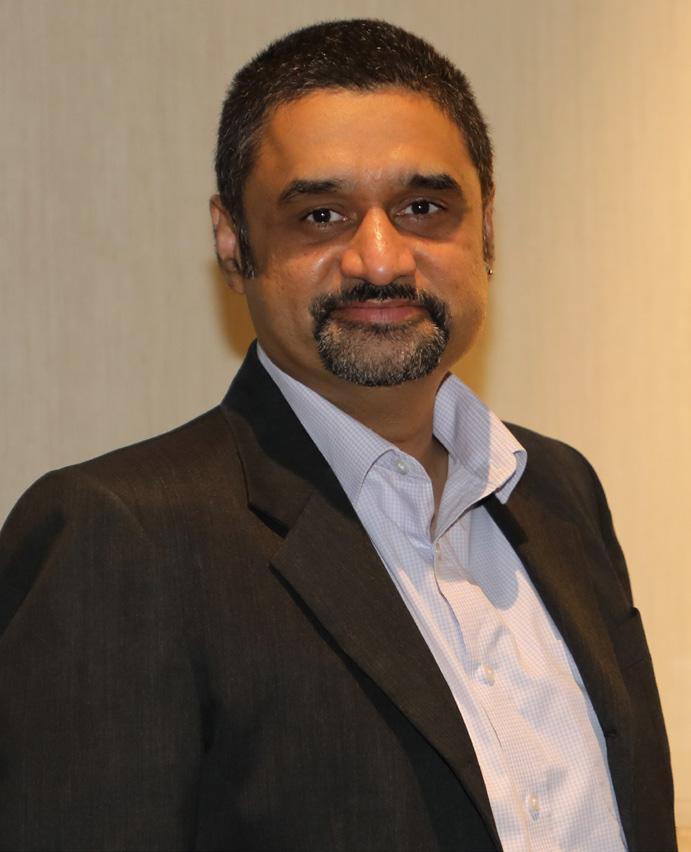
4 minute read
Technology Trends Continue to
Technology Trends Continue to Take Off at Speed
Christoph Dobler, the Head for the Middle East & Africa region at Dynabook Europe GmbH, speaks about the challenges faced in 2020 and the opportunities to look forward to, in 2021
Advertisement
How was 2020 for the industry and your company?
2020 has been a year like no other, COVID-19 has had an era-defining impact on both our personal and professional lives and no industry is immune from the effects of the global crisis that has devastated so many lives and livelihoods.
It can be said that the tech industry has had certain advantages, given the high demand for secure work from home and home learning solutions, so the onus has been on us and our peers in the industry to rise up and meet these needs, whilst also being cognizant of the challenges that we have all faced and look for ways to overcome them, and to help our local communities where we can.
What sort of opportunities did 2020 bring along?
The acceleration of remote working has seen businesses of all sizes turn to technology to meet the needs of a new distributed workforce and maintain operational efficiency. While 2020 produced few new technological or business developments, it certainly accelerated many technology trends already in motion. We’ve seen businesses pivot to deal with a lot of changes in the face of COVID-19. According to McKinsey, a fifth of businesses have dialled up investment in digital transformation initiatives, with many making the impossible happen overnight or taking decisions in a matter of days rather than months. In this extraordinary time, businesses have learned how to adapt and progress more quickly than ever expected.
What were your key achievements in 2020?
We launched a series of our most advanced and exciting products across our premium Portege, mid-market Tecra, and entry-level Satellite Pro platforms. Beginning with the Portégé X30L-G, the world’s lightest 13.3-inches fully-featured business laptop, at just 870g, and most recently with the introduction of the Satellite Pro C40-H and C50-H. Both models have been ideally suited to the needs of the work from the home workforce and the home learning student population respectively.
We also recently launched our new Portégé X30W-J, the world’s lightest 13.3-inch convertible with 11th Gen Intel Core processors. Weighing just 989g, the 2-in-1 device meets and exceeds the strict requirements for battery life, start-up time, processor, Thunderbolt 4, and Wi-Fi 6 to be certified for Intel’s Evo platform specification.
What promises does 2021 bring along?
With a growing team and an increase in our 2nd tier business model, we will broaden our reach into the market and address a wider
audience.
Do you see opportunities in the regional markets with new markets opening up?
We do see a great deal of growth potential in the MENA region, and this is why we have built a dedicated team to take this forward. With myself now Head of Region Middle East and Africa, and the appointment of industry veteran, Philip Ashkar to the post of Business Development Manager MEA, we are looking forward to further expansion in the region in 2021 and beyond.
According to you, which technologies will be in demand in 2021?
Unsurprisingly, 2021 will see a new and changing workplace, and technology will be needed to support it. Automation has been on the business agenda for years now, but as social distancing rules remain in place going into 2021, automation and robotics will likely become core competence of multiple sectors in the foreseeable future.
We’ll see current technology trends continue to take off at speed, with new internet-of-things (IoT) applications, technologies, and solutions reaching every sector. The unprecedented working environment created by the pandemic has propelled technologies like assisted reality (AR) forward, demonstrating the potential of wearables in driving collaboration amongst remote teams. We also predict that mobile edge computing will reach more sectors as we start to see the real benefits.
Healthcare is going to be a major focus in 2021. The global IoT healthcare market is expected to grow to $188 billion by 2025, at an annual rate of 21 percent. While IoT in the medical sector has been on prediction lists for some years now, it will see a renewed importance in 2021. A number of people stayed home in 2020, leaving long-term illnesses untreated.
In 2021, the rise of telemedicine and remote diagnosis will see healthcare professionals able to proactively monitor, support, and provide care for these patients’ health at home. Consumer interest in wearable health devices, such as ECG and blood pressure monitors, will accelerate as patients appreciate the insight into their own health and the ability to share data with their doctor remotely, for an instant health evaluation.
What will be your key focus areas for 2021?
We will be looking to engage more in the Education sector, given that it is a vital instrument in everyday life for all. In addition, we will continue to develop our remote working solutions, as well as growing our second tier reseller base.
What would you like to do differently in 2021, when compared with 2020?
As highlighted above, we plan to travel a lot more within the region, engaging more personally with partners and customers as soon as health precautions allow. Dynabook is continuously developing new products, with the aim of expanding our roadmap across all segments.










